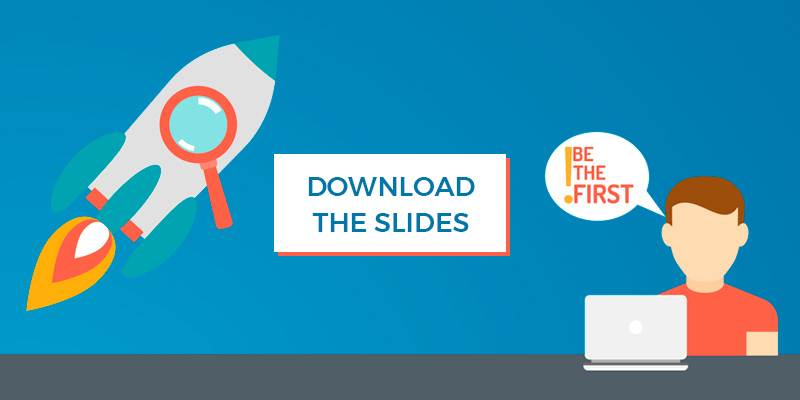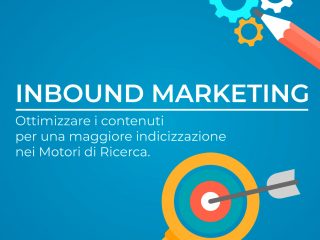What is inbound marketing?
Inbound marketing is a strategy that has been created in the guise of the digital age, it has been created on the study of today’s user behaviour, their actions, their needs. Inbound marketing is that strategy that helps you generate quality traffic without the need to disturb the consumer with traditional and annoying advertising methods, and gives you the possibility of attracting only customers who are genuinely interested in your services and products.
How does he do it?
We need to stop and think about how we act in the shoes of the consumer. What do we want our browsing experience to be like every time we access our browser? Let us answer this question and we will be able to understand how and why this marketing model can revolutionise internet browsing for the user and quality customer acquisition for the marketer.
Thanks to Inbound Marketing, not only will we no longer be forced to chase our customers with traditional and interruptive means of promotion (such as banners, pop-ups, unwanted newsletters), but we will be able to make them search for us directly. All this is not a miracle from heaven, but an intelligent means of satisfying the needs of the general public by attracting and retaining them.
What are Inbound channels?
Inbound channels are for example newsletters we have subscribed to, content from a blog we have chosen to read, a video we have chosen to watch. 90% of users on the web navigate through Inbound channels.
How to use Inbound Marketing in e-commerce?
I will try to answer this question by describing the purchasing models, i.e. the stages that generate the traditional purchase of a product and the stages that generate the purchase of a product in the digital age. Traditional buying model
- Stimulus: I receive the stimulus from an advertisement
- First moment of truth: we stand in front of the shelf and choose whether to buy the product of that brand or another
- Second moment of truth: we are at home and judge our purchase by testing the product
The traditional purchasing method, described by Procter & Gamble (a large multinational producer of major brands including Pantene and Gillette) in 2005, is structured in 3 phases made up of the stimulus, i.e. the moment in which we receive an advertising stimulus, the first moment of truth, i.e. the moment in which we are physically in the shop or in front of the online product window and we are deciding whether to buy that particular product, and finally the second moment of truth, that moment in which we go home and give an opinion on the product purchased.
Today, the traditional buying method has undergone an update due to digitisation, web search, and search engines. To the previous phases is introduced The Zero moment of truth, that time lapse, which occurs between the stimulus and the choice to buy, when the user surfs the Internet to search for more information about what he is about to buy:
Let’s see the steps:
- Stimulus
- ZMOT (Zero moment of truth)
- First moment of truth
- Second moment of truth
Exploiting the zero moment of truth to win over your customers
“Stop chasing customers and make them chase you”
The ZMOT is that moment we must be able to use to our advantage to show our possible buyer good reasons for choosing our products/services.
So how does Inbound Marketing work?
The most important medium that sums up the Inbound Marketing ‘philosophy’ is content. By creating themed and quality content, you attract people naturally to your product, your services and your company by leading them to a place where they themselves have decided to be, without compulsion.
Inbound Marketing helps your potential customers to land in places they themselves have decided to visit, benefiting them and especially your company and your profits.
Let’s summarise the structure at the heart of Inbound Marketing: attraction, conversion, conclusion, retention.
These four phases are the focal points that, customised on the basis of your services, will help attract the stranger, turning him at first into a contact, then into a customer and finally into a promoter.
Attraction
The main difference between Inbound and Web Marketing is that Inbound Marketing involves attracting an ideal consumer who is more likely than others to be interested in your service. That is why it is important to study the profile of your ideal consumer and build on their habits and needs the content you will write in your blog, social media, etc.
Conversion
This is the crucial point at which the simple visitor becomes a contact. In order to become a contact, it is necessary for the visitor to leave some of his or her data, such as his or her name, his or her e-mail address, and perhaps his or her position within the workforce of his or her company.
One method that can make this transition possible is to give him something in return, such as an in-depth report on a certain topic of interest to him or anything that might delight him.
Conclusion
Closing the process is the moment when you close a sale with the newly acquired contact. Beware that not all contacts will be willing to buy your service instantly, it may take time, that is why you should not get discouraged and continue to delight them with content that may interest them to reduce the decision time to close the sale.
Loyalty
Never abandon your customers once they have bought from you. Don’t forget about them after the sale, because a happy customer will become your best advertising weapon; thanks to word-of-mouth they can bring you new customers who are much more trusting than a foreign visitor.
Inbound Marketing Tools
Attraction: Blog, search engines
Conversion: Call to action, landing page, form
Conclusion: email
Loyalty: newsletter, social media, customer care
Conclusions
Whether your goal is to increase sales on your e-commerce or the acquisition of new customers through your website, the strategy remains the same.
I wanted to introduce you to Inbound Marketing (a term coined in 2005 by Hubspot, a company specialising in the production of marketing software), because it exactly mirrors the profile and habits of people today, who in the digital age, submerged in a myriad of information thanks to the web, are constantly searching for information, solutions and curiosity.
Ninety per cent of companies around the world invest in traditional marketing strategies without thinking that the world is constantly changing, people’s habits and needs change, and our sales system must change in parallel with them.
Stopping every once in a while and reflecting on the concrete gains made from invasive advertising, traditional advertising methods, can prove to be a real turning point in the direction of an innovative Marketing strategy tailored to the needs of people in 2018.





